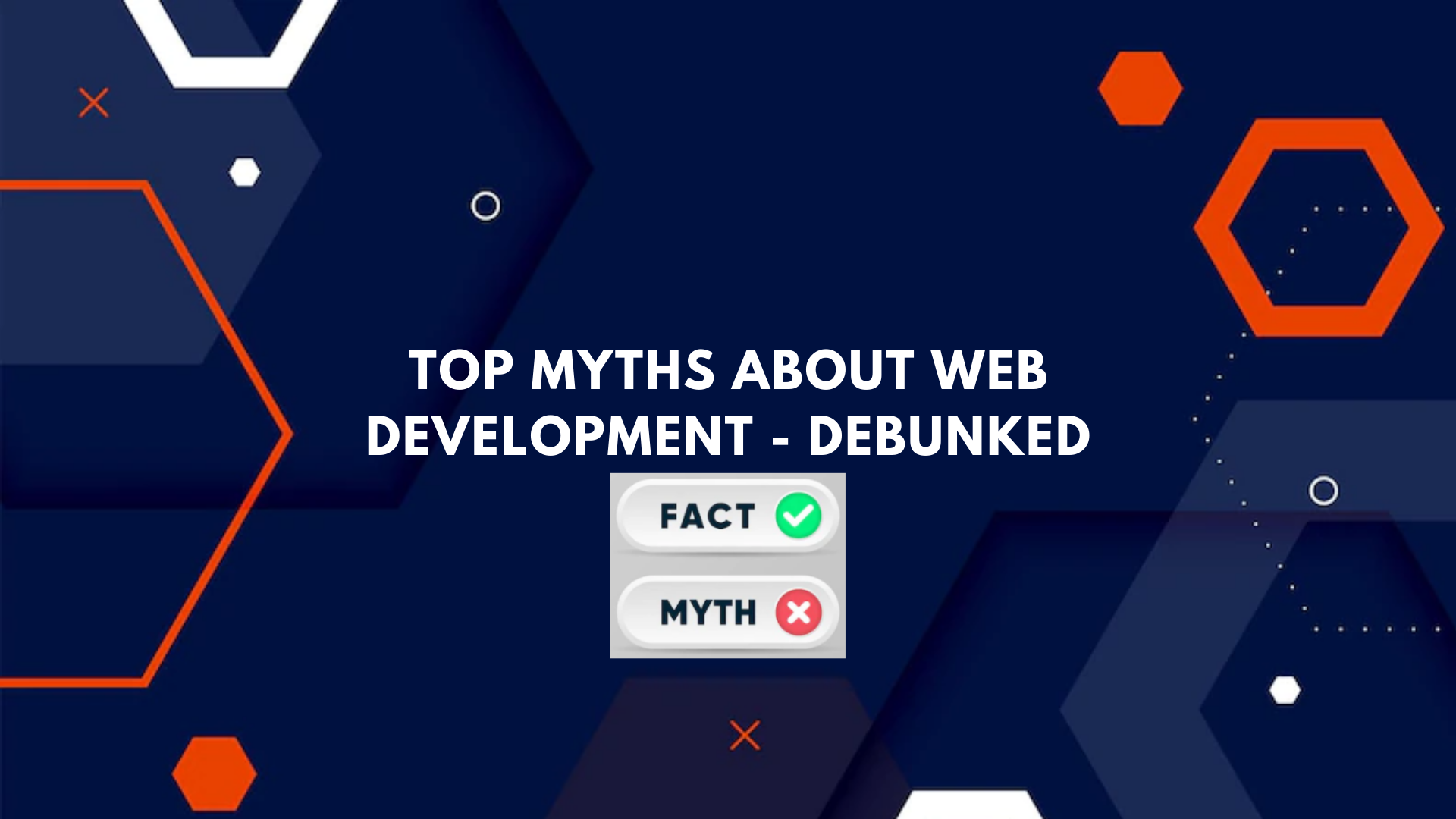Businesses need websites. Even if you are not selling online, you need a digital presence.
And the science and art of developing and maintaining a website is called web development. So if you are a business owner or key decision-maker, you need to know the ins and outs of web development to ensure that your business has a fully-functional, aesthetically-pleasing, and result-yielding website.
However, there are several myths floating around the concept of web development. Myths that will fog your vision and deter you from getting the best possible results.
To save you from being misled by these myths, we have decided to debunk these myths today. Take a look.
Myth 1 – Creating a website is a linear process

The quick truth: Website development is an ongoing, often circular process.
Most people believe that creating a website involves going from one starting point to an endpoint by following a series of steps. And that’s the end of it.
That, however, is not true. Web development is an ongoing, often circular process.
How?
Well, that’s because while creating a website from scratch might be a one-time task where you need to follow certain steps in a series, things don’t end there. As time progresses, websites get outdated. Even if your website is working fine, your audience’s expectations change. And to meet those changing expectations, you need to revisit the core elements of your website. The design, features, and content need to be updated.
Thus, the website development process is not something you wrap up in a few weeks and move on. You have to always keep an eye on your website and make sure you opt for frequent web revamps to always stay relevant.
Myth 2 – Launching the website is the toughest task

The quick truth: The real struggle begins after the website is launched.
Getting a website to go live is only halfway through the journey. The real struggle begins after the website is launched. Once you go live, bugs crawl up, user experience and feedback start to pour in. And you also understand how your ideas are actually faring in the real world. That’s when you need to take a close look at your website again. Post-development support and long-term website support and maintenance come in handy here. With continued tech support, you get the liberty to act on the feedback you receive and actually optimize your website for real-world performance.
Myth 3 – Your website needs to look good to you

The quick truth: Your audience needs to like your website, not you.
When you buy someone a gift, what do you prefer: something that you like or something that the recipient likes? The latter, right?
The same logic applies when you are designing and building your website. As a C-level executive, you might be more inclined towards sober shades. But if your audience is the youth basket (18 to 24 years), funky elements and loud shades may be more appealing on your website.
While you need definitely be on board with how your website looks and feels, you don’t have to necessarily like it. Your audience needs to like your website.
So when you sit down deciding on how your website should be, think from your audience’s viewpoint.
Myth 4 – Minimalism maximizes profits

The quick truth: You need to decide when to go minimal and when not.
We have to accept this. The first websites on the Internet were cluttered. And since then we have progressively moved towards simpler, cleaner, and more minimalistic web designs. White spaces are important. However, minimalism doesn’t always work.
You need to decide when to go minimal and when not.
There are as many takers for loud colors, chunky elements, and drama as there are lovers of the simple, subtle, and minimalistic style.
Whether or not your website has to be fit the minimalistic box depends on what your audience is more likely to enjoy, appreciate, and relate to.
Proper market research and thorough ideation are important.
Myth 5 – When it comes to features, the more the merrier

The quick truth – You need only the relevant features, not all the features.
Your website is not a dumping ground for every feature that’s there. Your website is not an exhibition of what all can websites do. Your website is there to help your audience do what’s best for your business.
So you need to be picky while deciding the features that get a place on your website. You need only the relevant features, not all the features.
To give you an example, if you don’t want people showing up to your office (‘cause you have an online business), there is no need to place an interactive Google Map on the website.
With that, we have busted the most prevalent web development myths. We hope your vision about your business website development is crystal clear now.
Want to see more myths get debunked? Check out part 2 of this blog right here.
Want to supplement that clear vision with custom web design and development from experts? We have the right team waiting for you at SynergyTop.
Request a custom website development quote right here.
About SynergyTop
SynergyTop is a San Diego-based digital commerce company offering custom web, software, and mobile app development services. We offer services right from ideation to post-development support and long-term maintenance as well. With SynergyTop, your project doesn’t just get off the ground but also reaches the zenith.
For more details, write to us at contact@synergytop.com
















